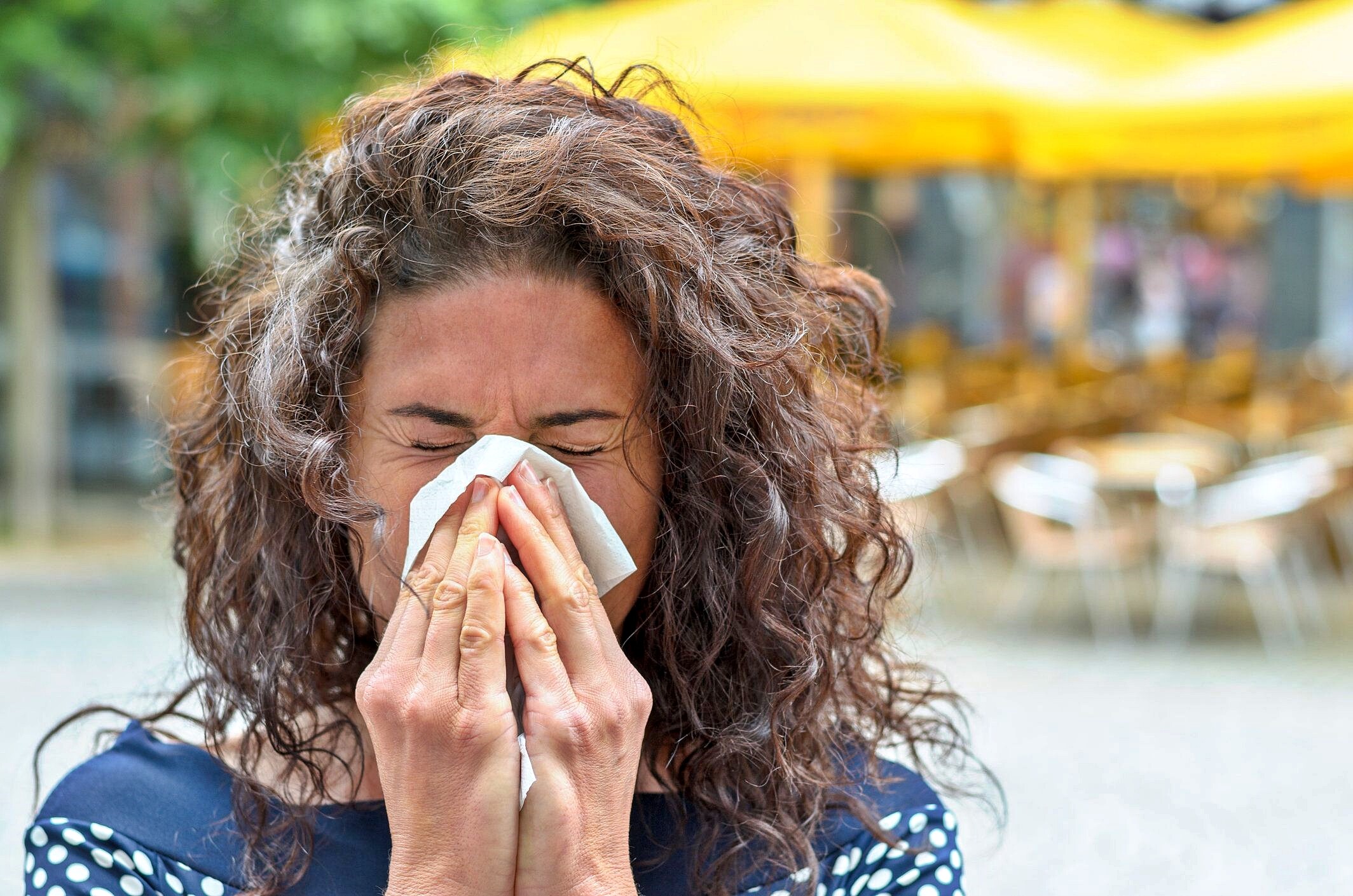Hay fever symptoms are mainly annoying. We explain how to distinguish the signs from those of a cold and what helps against it.
Hay fever or cold?
Hay fever is an inflammation of the nasal mucous membrane (rhinitis), which is caused by allergies and is triggered by plant pollen, for example. One of the biggest risk factors for an allergic reaction is pollen from grasses and trees.
An allergic rhinitis causes severe symptoms, especially in spring and summer, but some allergy sufferers still have to deal with pollen in autumn. Colds also have many allergy symptoms, but occur mainly in the cold months. In many patients hay fever is now also part of a cross-allergy.
Hay fever symptoms: What are they?
At first glance, it can be difficult to distinguish hay fever symptoms from those of a cold. Both diseases cause the following symptoms:
- Sneeze
- Cough
- Sniffles
- Stuffy nose
- Breathing difficulties
- Sleep disorders – thereby also persistent tiredness and concentration problems
Other symptoms of hay fever
Unlike a cold, hay fever also causes the following symptoms:
- Tearing eyes
- Swollen eyelids
- Itching
- Tingling in the nose
- Burning and itching on the palate and throat
Diagnosis: Do I have hay fever or rather a house dust allergy?
The so-called prick test can be used to clarify whether the allergic rhinitis is actually caused by pollen or another allergy, for example a food allergy or an insect venom allergy. In the prick test the skin is sprinkled with solutions containing allergens and then lightly scratched. If an allergy is present, redness and wheals appear after about 20 minutes.
Which pollen causes hay fever?
Hay fever symptoms are mainly caused by the following pollen:
- Grasses, heavy load
- Hazel, heavy load
- Birch, heavy load
- Rye, heavy load
- Mugwort, heavy load
- Ragweed, heavy load
- Timothy grass, heavy load
- Ribwort plantain, moderate stress
- Ash, low load
Basics of prevention: How can I prevent allergic symptoms of hay fever?
The most obvious way to prevent hay fever symptoms is to avoid the allergen. At the same time, however, this method is unfortunately rather unrealistic because pollen is distributed in the air we breathe and is usually too small to be seen with the naked eye. Accordingly, it is hardly possible to really avoid them.
Treat allergies like hay fever with medication
The second treatment option is the administration of medication to relieve the hay fever symptoms. These include tablets with so-called antihistamines, nasal sprays and eye drops. Some people also need a nasal douche to get rid of pollen.
Hyposensitization against pollen allergy
The third possibility is the so-called hyposensitization against hay fever and Co. The therapy aims to slowly reduce hypersensitivity to the allergen. To do this, however, you have to bring a lot of time with you and stick with it: Depending on the therapy, the hyposensitization must be carried out over a period of months.

